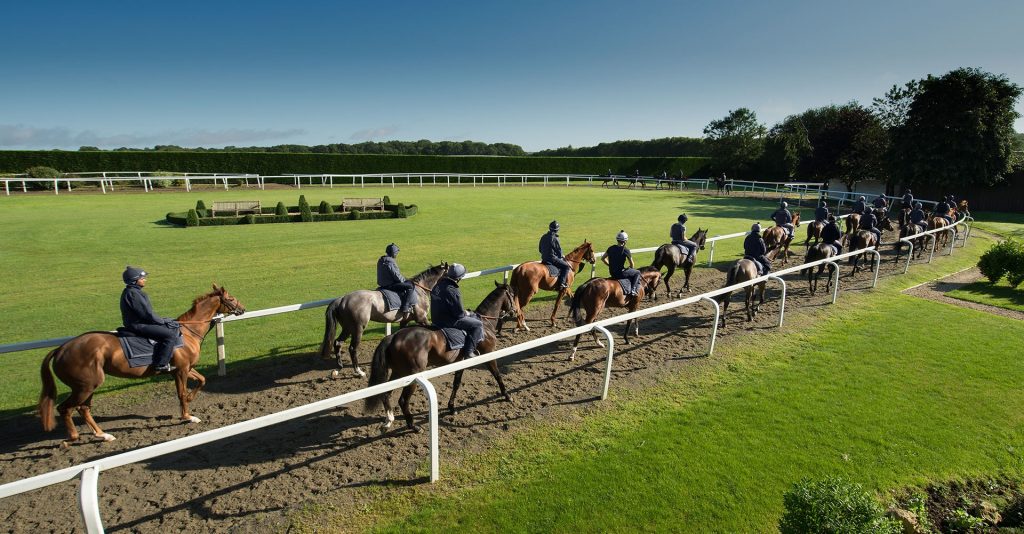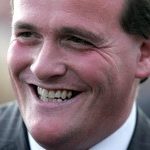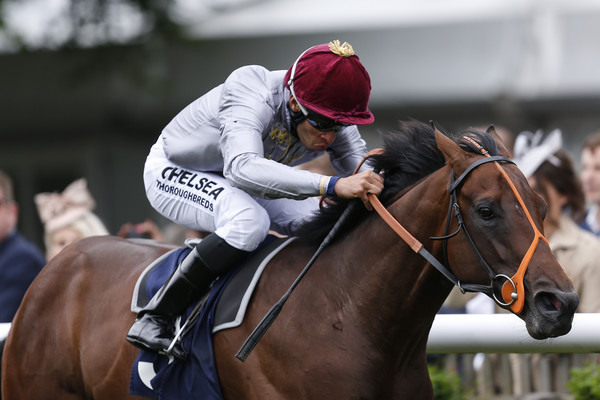The Racing Horse was the top writer for Betfair and for nearly five years covered many sporting subjects. We now write for BETTING SCHOOL on how we can profit from Sports Betting! Our latest piece looks at the modus operandi of Richard Hannon and asks is it fit for purpose in 2018?
|

This is not a keyboard warrior attack!
It is hard not to like the affable Hannon team operating out of the Herridge Racing Stables in Wilshire but from a betting sense - they get on our nerves. We stress this is neither personal nor a keyboard warrior attack, and whilst we question their vanity we are more concerned with their modus operandi from a betting perspective.
Egotism, sanctimony and auras
A visit to their website betrays an egotistical sally of sanctimonious self-praise: “There is an ebullience, an energy about Hannon, a vitality that extends from him like an aura. This is after all, the job he was born and bred to do.” This is seriously excessive, auras are extolled by others and not self-proclaimed. Unabashed they continue: "Successions in sport rarely go smoothly yet the evidence from the four seasons since Richard Hannon took over from his father in 2014 could not be more compelling.”
“There is an ebullience, an energy about Hannon, a vitality that extends from him like an aura. This is after all, the job he was born and bred to do.” This is seriously excessive, auras are extolled by others and not self-proclaimed. Unabashed they continue: "Successions in sport rarely go smoothly yet the evidence from the four seasons since Richard Hannon took over from his father in 2014 could not be more compelling.”
Doomed for failure
With an army of horses to be exercised every morning, dozens of entries to be made, owners to be contacted, jockeys to book, visitors to be entertained, horses to be cleaned, vetted, transported and then saddled at the races, and with around 100 staff on the pay roll, the system in place is certainly a triumph of organisation. But, irrespective of past successes the obsession of procuring precocious juveniles, coupled with the low level prize money in the UK 2018 it is now doomed for failure with too many horses chasing too little cash. The days of saturating races with multiple well-breds racing for £4,000 are clearly over, their rich Arab owners are no longer interested in scraps from the top table, and besides, the smaller yards have never been smarter and now have the skill, confidence and ingenuity to compete with the big guns like never before.
Current model not sustainable
In any case our sport would function far better with less horses. Reality tells us trainers like Hannon, Richard Fahey and Mark Johnston cannot satisfactorily provide the requisite time to each horse in their care. For Hannon to spend just 10 minutes with each horse that ran for him last year would take over 45 hours, so he substitutes his time with a chain of command via a white marker board and a mobile phone. Last year for example, 268 made it onto the track of which 132 did not win a single race with another 92 winning just once. Given their breeding and purchase prices these figures are not sustainable. Had these losing horses been sent to other smaller astute yards we are certain many of them would have won races.
An absolute number representing optimum effectiveness?
Facilities, knowledge, experience and expertise are negatively impacted because there must be an absolute number of horses for each yard that represents optimum effectiveness. Training horses without seeing them lies somewhere between winging it and poor business practice and certainly not optimal.
A look at the figures
Back to the Hannon claims, we looked closely at the figures, compelling or otherwise. Figures can be misleading over the short-term so it is important we examine them fully. Here are the four-year numbers for Hannon Junior since he took over from his father:
2017: 194 wins from 1354 at 14% (-79.49)
2016: 172 wins from 1357 at 13% (-211.92)
2015: 195 wins from 1382 at 14% (-348.38)
2014: 206 wins from 1404 at 15% (-366.41)
The four-year average shows 192 winners per season at around 14%, so how did Hannon Senior compare in his last four years:
2013: 235 wins from 1412 at 17% (-306.32)
2012: 218 wins from 1367 at 16% (-165.90)
2011: 218 wins from 1408 at 15% (-46.12)
2010: 210 wins from 1341 at 16% (-203.61)
His four-year average showed 220 winners per season at around 16% and a significant difference. Hannon Junior has not been able to match the numbers of his father and this raises a simple question – why? Setting aside the word quantity let's look at the UK winning prize money totals to see if they tell a different story?
2017: £3,000,248
2016: £2,820,064
2015: £3,606,070
2014: £4,749,470
2013: £4,532,465 (under Richard Hannon Snr)
The final year and the one that followed when Senior was in charge they banked over £4.5m in prize-money both years, since then it has dropped. Whichever way you view the figures there is clearly a downturn and something that needs addressing.
Issues of integrity
Significantly last April, Richard Hannon threatened to reduce his runners at Windsor because of poor prize-money. We believe it is time he keeps that promise, to help himself and, for the sake of racing. He absolutely floods the scene and clogs the racecards at these type of tracks with his juveniles, stifling, confusing, reducing our opportunities to profit. Furthermore, running four and five runners from different owners in the same race raises issues of integrity and unsafe results, which in turn arms the detractors of our sport! If we had the power we would ban multiple entries from a single trainer where there are a number of different owners involved. It is one thing to beat the opposition but having to beat four or five stable-mates is unpalatable for the losing owners!
Wind of change?
BUT, is there a wind of change in their modus operandi? If you read our piece on Richard Hughes last month you would have picked up on the fact he rejects emphatically the Hannon model of being totally reliant on early juveniles. This former great jockey, son-in-law and brother-in-law to the Hannons must command a certain influence and his authority could be swaying things in a different direction. What are these figures telling us?
2017: 2yo 83-555-15% 3yo 87-655-13% 4yo 24-144-17%
2016: 2yo 87-622-14% 3yo 79-593-13% 4yo 6-142- 4%
2015: 2yo 108-675-16% 3yo 76-574-13% 4yo 11-133- 8%
2014: 2yo 119-638-19% 3yo 70-595-12% 4yo 17-171-10%
2013: 2yo 135-701-19% 3yo 81-542-15% 4yo 19-169-11%
Given expertise, breeding and price-tags...
Historically, the team churn out 2yo winners between 5f and 6f and then again with 3yos up to a mile, whilst struggling to win with their older horses, but since 2013 the 2yo scorers have slowed/dropped over the past five years resulting in a net difference of 52 winners. In the same time frame the older horses have dropped from 11%, 10%, 8% to an inept 4% in 2016 and, given expertise, breeding and price-tags makes for desperate reading. How could a stable of this quality produce a dire 6-142 for 4% (-108.50pts) over a year period for any age group?
Then, and without warning!
Then, incredibly and without warning 2017 showed a hike - a big hike up to 17% with 24-144 for 17% (+30.33pts). For the first time ever the strike-rate for his older horses were higher than those of the juveniles! Something of some consequence happened at Herridge Stables, it could not have been an accident - it must have been design! We do not have figures to hand but cannot remember Hannon Senior hitting anywhere near 17% in his whole career with that particular age-group! Whilst accepting 17% is not a rate to get gaga about it is something very important to factor-in from last year into our betting. If the team have truly tweaked their operation it is reasonable to assume this figure, given the stance and comments of Hughes, could lead to more 4yo+ winners at the same strike-rate or more - we are on red alert!
Classics are the kingdom, the power and the glory
Of course the 3yo Classics are the kingdom, the power and the glory, but quality wins those races not quantity and there is a model for the Hannon's to aspire to that is underpinned by humility. Aidan O'Brien has unlimited funds at his disposal but refuses to buy into the lotto numbers game and he gives young horses a chance to mature. In context, his horses in Ireland and in the UK last year won 155 races from 724 runners for 22% and £15m worth of prize-money and he understands the importance of a number one jockey which is absolutely pivotal to progress.
Demands best pilot - receives something less
Since Hughes retired the Hannon stable have not employed a bona fide first jockey and making-do in any sport is the equivalent of standing still, standing still whilst your rivals are winning is in effect going backwards and even a dereliction. A mega multimillion pound racing and breeding organisation with 300 horses and a staff of 100 racing for Arab millionaires, demand best pilot and feedback and apart from all things preparation, the difference between winning and losing a Classic.

Star quality missing!
They used 50 jockeys last year (2017). Sean Levey is competent without star quality and was their most successful jockey but his 54-370 for 15% (-25.19) was unexciting with the improving Tom Marquand next best at 33-278 for 12% (-21.55). Surprisingly Hollie Doyle was third best regarding winning numbers with 25-125 for 16% (+11.04), in contrast the last part-year of Richard Hughes recorded 38-185 for 21% (-21.50) plus of course his quality feedback. Jockey bookings is clearly an area that cannot be tweaked and the suggestion is the team secure the services of a number one jockey to assist with deployment.
Conclusions: Cannot continue in their present form
The conclusions are obvious, the Hannons cannot continue in their present form. From our betting perspective they are not easy to profit from and we generally avoid races they are involved in though this year we will take more than a cursory glance at their 4yos+ runners and especially if combined with an interesting jockey booking. We look forward to writing a follow up piece this time next year to see if there is a change of direction and how close to the mark our comments were..
|
Proven mathematical laws are the governing force of horse racing betting. Consequently every bet we place is conceived then predicated from statistical analysis protected by a maths-based edge with perceived value attached. Our formula is simple because we are yet to be convinced that a complication of a system is proportional to profit. So what do we mean by a maths-based edge? It means finding something with a solid mathematical core, something historically profitable and something that is unlikely to change or suffer fatigue going forward. Then, if we can filter negative influences from the original proposal and provide a sound rationale for doing so, we can claim that betting edge.
~
The absolute key to success in betting is the ability to identify value bet situations where the odds available are greater than the true chance of winning and then to have the discipline to methodically bet only when these situations arise. If this is done the laws of mathematics and probability dictate that in the long term, you will make a profit.
|
Disclaimer
Our information and betting advice is for educational purposes only. Please exercise caution when acting upon our advice and remember that gambling carries risk. No liability is taken by the site or product owner following any of the information given or sold to you. Betting always involves a level of risk and you should never bet more than you can afford to lose.
|

 “There is an ebullience, an energy about Hannon, a vitality that extends from him like an aura. This is after all, the job he was born and bred to do.” This is seriously excessive, auras are extolled by others and not self-proclaimed. Unabashed they continue: "Successions in sport rarely go smoothly yet the evidence from the four seasons since Richard Hannon took over from his father in 2014 could not be more compelling.”
“There is an ebullience, an energy about Hannon, a vitality that extends from him like an aura. This is after all, the job he was born and bred to do.” This is seriously excessive, auras are extolled by others and not self-proclaimed. Unabashed they continue: "Successions in sport rarely go smoothly yet the evidence from the four seasons since Richard Hannon took over from his father in 2014 could not be more compelling.”